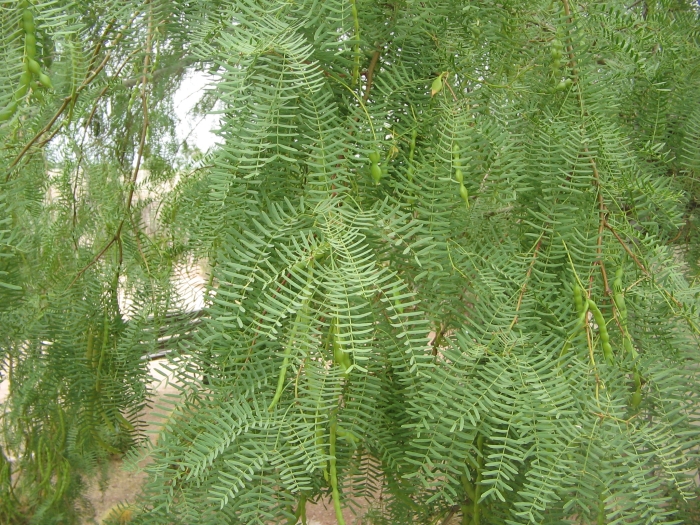Honey Mesquite
(Prosopis glandulosa)
Honey Mesquite (Prosopis glandulosa)
/
/

Don A.W. Carlson
CC BY 2.5















































































Estimated Native Range
Summary
Honey Mesquite is valued for its hardiness, adaptability to poor soils, and its ability to fix nitrogen, thus improving soil fertility. It is often used in xeriscaping, as a windbreak, or for erosion control due to its extensive root system. The wood is used for furniture, flooring, and barbecue smoking. It requires full sun, tolerates low water conditions, and thrives in soils with medium drainage. However, its aggressive root system can interfere with nearby structures and its thorns can be problematic in high-traffic areas. It is considered invasive outside its native range, so caution is advised when planting in non-native areas.CC BY-SA 4.0
Plant Description
- Plant Type: Shrub, Tree
- Height: 25-35 feet
- Width: 25-35 feet
- Growth Rate: Rapid
- Flower Color: Yellow
- Flowering Season: Spring, Summer
- Leaf Retention: Deciduous
Growth Requirements
- Sun: Full Sun
- Water: Low
- Drainage: Medium
Common Uses
Bank Stabilization, Bee Garden, Bird Garden, Butterfly Garden, Deer Resistant, Drought Tolerant, Edible*Disclaimer: Easyscape's listed plant edibility is for informational use. Always verify the safety and proper identification of any plant before consumption., Fire Resistant, Fragrant, Low Maintenance, Rock Garden, Salt Tolerant, Showy Flowers, Street Planting
Natural Habitat
Native to arid and semi-arid regions such as grasslands, deserts, and scrublands
Other Names
Common Names: Mesquite , Algaroba , Mesquite-Busch , Texas Mesquite
Scientific Names: Prosopis glandulosa , Algarobia glandulosa , Prosopis juliflora var. glandulosa , Prosopis chilensis var. glandulosa , Neltuma glandulosa , Dasiogyna glandulosa
GBIF Accepted Name: Prosopis glandulosa Torr.